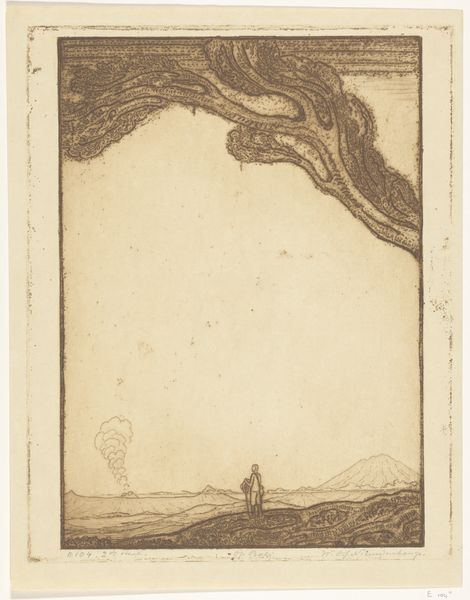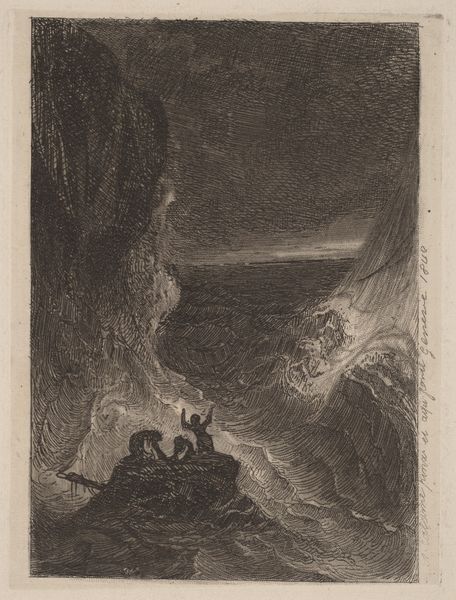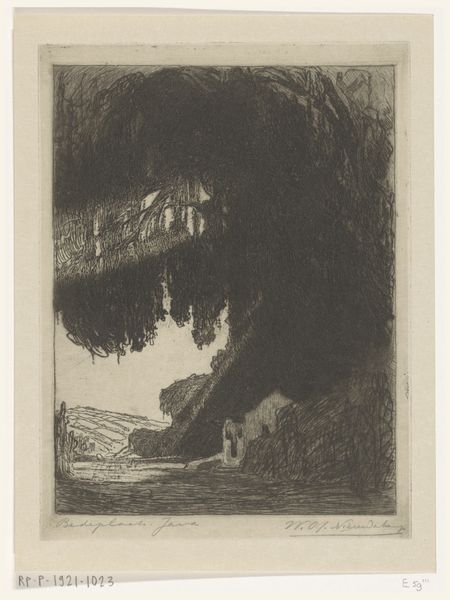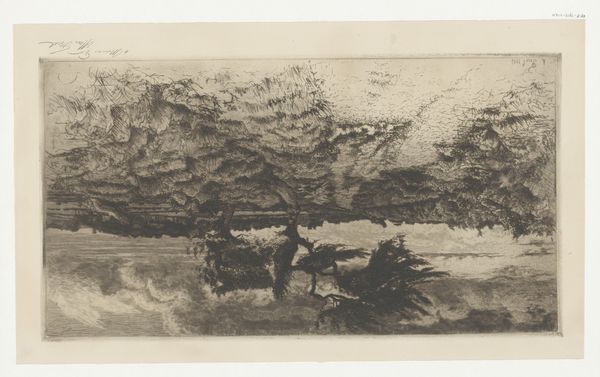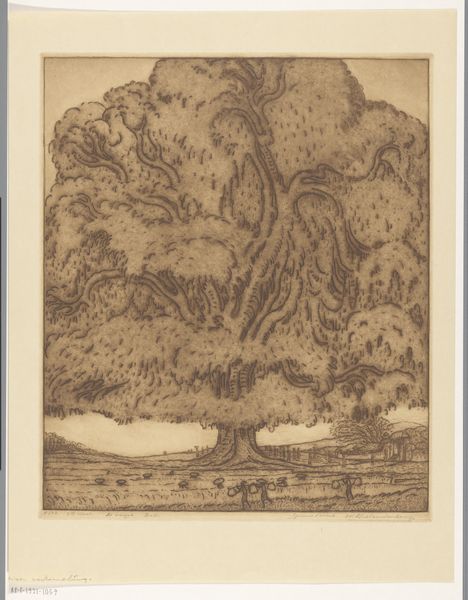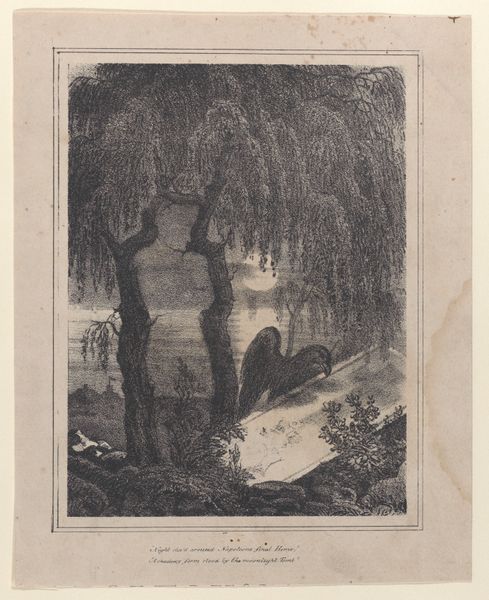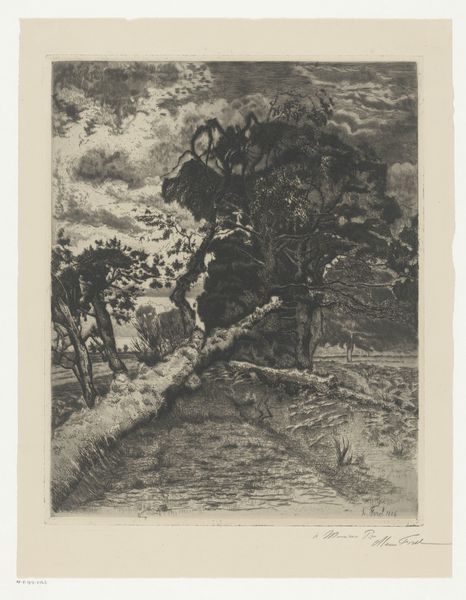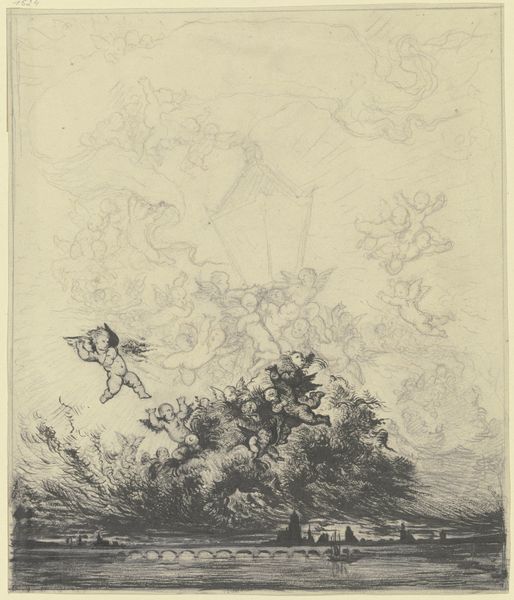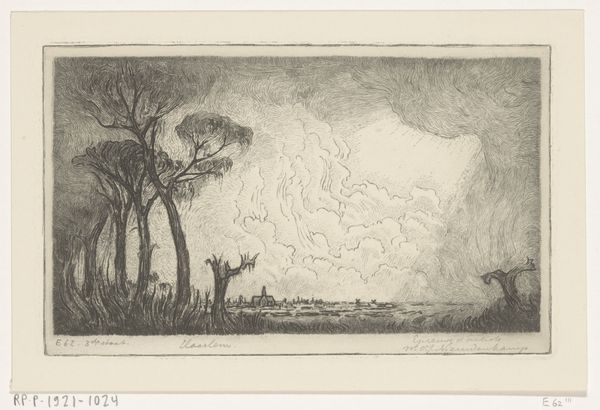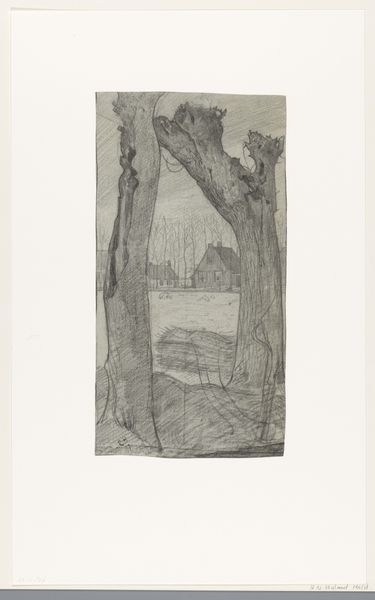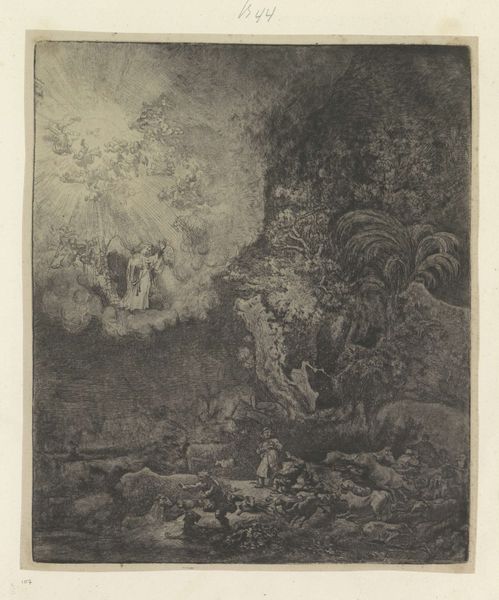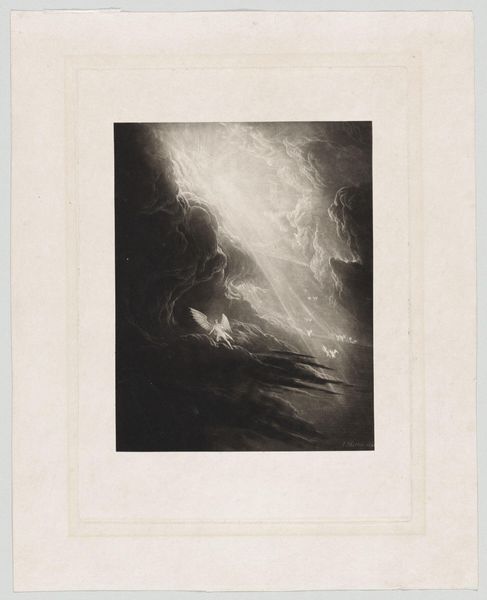
drawing, lithograph, print, paper
#
drawing
#
art-nouveau
#
lithograph
# print
#
landscape
#
paper
#
symbolism
Dimensions: height 428 mm, width 367 mm
Copyright: Rijks Museum: Open Domain
Curator: What strikes me first is the sense of theatrical drama. A lone figure stands framed by a massive, gnarled tree, seemingly gazing out at a stylized, dreamlike landscape. Editor: Indeed. We’re looking at "Nachtelijke Offerande," or "Nocturnal Offering," a 1912 lithograph by Wijnand Otto Jan Nieuwenkamp. It’s quite representative of the artist’s style—a blending of Art Nouveau aesthetics with symbolic imagery. Curator: I find the composition particularly interesting. The artist has created a kind of proscenium arch with the tree and its heavy branches. It focuses our gaze powerfully. Note the limited color palette; shades of gray and brown contribute to the somber mood. The textured, almost velvety quality of the lithograph gives a tactile dimension to the landscape, don't you think? Editor: Absolutely. And if we consider the historical context, Nieuwenkamp traveled extensively in the Dutch East Indies, now Indonesia, in the early 20th century. These travels heavily influenced his art, and it's likely this work reflects some of his experiences with, or interpretations of, local cultures. The figure's headdress, while stylized, hints at ceremonial attire perhaps? I see the heavy emphasis on landscape and the exoticization of native customs, themes prevalent in European Orientalism. Curator: That's a valid reading. But what speaks to me is the figure's positioning – silhouetted, turned away from the viewer, gazing at a cloudy, and mysterious scene in the background. It invites contemplation of the sublime, and our limited human perspective when facing the vastness of nature. We are not explicitly told what the figure sees or feels, but it provokes a deeply individual interpretation from each viewer. Editor: I agree that it is indeed very individual, but our reading of the image is always affected by larger social values, not entirely detached. A colonial administrator looking at it in the 1920's, and me now are sure to read very different meanings in that headdress, that posture. Curator: Yes, and that shifting meaning itself is one of the beauties of art, isn't it? The form is fixed, yet the content lives on, renewed in each viewer's gaze. Editor: Precisely, Nieuwenkamp's lithograph is not merely an aesthetic object, but a mirror reflecting historical encounters, social structures, and subjective experiences back at us.
Comments
No comments
Be the first to comment and join the conversation on the ultimate creative platform.
